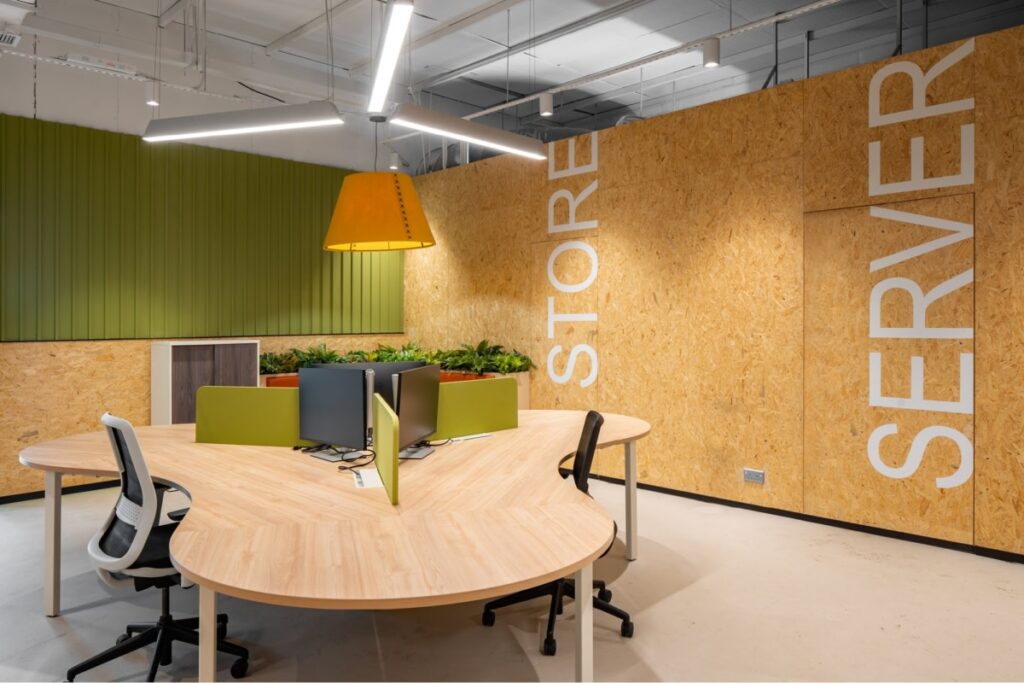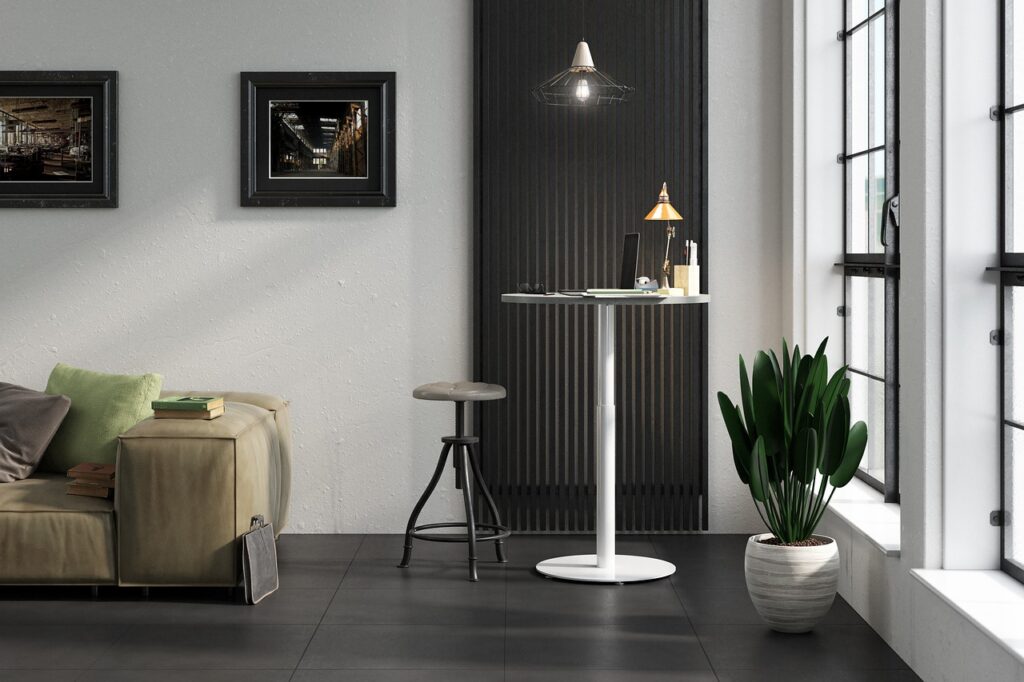Effective commercial interior design is the result of a harmonious blend of creativity, functionality, and brand expression. It goes beyond aesthetics, as it strategically addresses the unique needs and objectives of businesses while creating inviting and inspiring spaces. This article delves into the key elements that make commercial interior design successful. We explore how a commercial interior design company leverages space planning, the design and build process, and thoughtful incorporation of key elements to create captivating, functional, and branded environments that drive business success.
Also read: Top 20 Office Interior Designer Companies in Delhi NCR
I. The Foundation: Understanding the Brand and Space
Aligning with Brand Identity
Effective commercial interior design begins with a deep understanding of the brand’s identity, values, and target audience. A commercial interior design company collaborates closely with business owners to grasp the essence of the brand. The design then becomes a canvas to express and reinforce the brand identity throughout the space.
Analyzing the Space
Space planning is a fundamental element of effective commercial interior design. A commercial interior design company meticulously analyzes the available space, its limitations, and potentials. By understanding the space’s characteristics, they can develop layouts that optimize functionality and cater to the specific needs of the business.
Our space planning services in commercial interior design focus on optimizing the functionality and efficiency of your workspace, ensuring a seamless and well-utilized layout.
II. Creating Inviting Entrances and Reception Areas
Making a Memorable First Impression
The entrance and reception area are the first points of contact with customers or clients. Effective commercial interior design ensures that these spaces make a memorable first impression. By incorporating elements like captivating signage, welcoming seating areas, and attention-grabbing artwork, businesses can immediately engage and captivate visitors.
Reflecting Brand Identity
The entrance and reception areas are ideal spots to visually convey the brand’s identity. A commercial interior design company uses creative design elements, such as branded color palettes, logos, and graphics, to create a cohesive brand experience from the moment visitors step inside.
III. Lighting: Enhancing Ambiance and Functionality
Setting the Mood
Lighting is a powerful tool in commercial interior design. It sets the mood and ambiance of the space, influencing how customers feel and perceive the environment. From natural daylight to well-designed artificial lighting, a commercial interior design company uses lighting strategically to create the desired atmosphere.
Supporting Functionality
In addition to aesthetics, lighting also plays a practical role in commercial spaces. Well-planned lighting enhances visibility and functionality, making the space more conducive to work, shopping, or dining experiences. A commercial interior design company considers task lighting, ambient lighting, and accent lighting to meet the specific requirements of each area.
IV. Strategic Furniture Selection
Optimizing Space and Flow
A commercial interior design company selects furniture strategically to optimize space utilization and enhance the flow of the environment. The arrangement of furniture influences the traffic flow and customer experience. By choosing the right furniture pieces, businesses can create functional and inviting spaces that cater to the needs of their clientele.
Ensuring Comfort and Ergonomics
Comfort and ergonomics are essential considerations in commercial interior design. The right furniture promotes comfort for customers, clients, and employees. Ergonomic seating and workstations improve employee productivity and well-being, while comfortable seating in waiting areas enhances customer satisfaction.
V. Materials and Finishes: Reflecting the Brand Image
Thoughtful Material Selection
Commercial interior design companies carefully select materials and finishes that align with the brand image and style. High-quality and durable materials reflect the brand’s commitment to excellence, while eco-friendly materials resonate with environmentally-conscious customers.
Creating a Cohesive Aesthetic
Consistency in material selection creates a cohesive aesthetic throughout the space. From flooring to wall finishes, commercial interior design companies ensure that every element complements the overall design concept, reinforcing the brand’s identity.
VI. Thoughtful Brand Integration
Visual Storytelling
Effective commercial interior design tells a visual story about the brand. By thoughtfully incorporating branded elements, such as colors, logos, and graphics, throughout the space, businesses can create a cohesive narrative that connects with customers on a deeper level.
Consistency Across Touchpoints
Consistency in branding is crucial for business success. Commercial interior design companies ensure that the brand identity is consistent across various touchpoints within the space, including signage, displays, and marketing materials. This consistency reinforces brand recognition and strengthens brand loyalty.
Our 3D visualization services in commercial interior design bring your vision to life, providing realistic and immersive representations of your space before construction begins
VII. Embracing Sustainability
Sustainable Design Practices
Incorporating sustainability into commercial interior design is increasingly essential for businesses and customers alike. Commercial interior design companies adopt sustainable design practices, such as using energy-efficient lighting, eco-friendly materials, and recycled elements. Embracing sustainability demonstrates a commitment to environmental responsibility and resonates with socially-conscious consumers.
Creating Healthy and Productive Spaces
Sustainable design is not only good for the environment but also benefits the health and productivity of occupants. By choosing eco-friendly materials and promoting natural light and ventilation, businesses can create healthier and more enjoyable spaces for both employees and customers.
VIII. Ensuring Accessibility and Inclusivity
Universal Design Principles
Commercial interior design companies incorporate universal design principles to ensure that the space is accessible and inclusive for all individuals, regardless of age or ability. This includes features like ramps, wider doorways, and thoughtfully placed handrails that enhance accessibility.
Enhancing the Customer Experience
An accessible and inclusive space enhances the customer experience, making it more welcoming and accommodating for a diverse clientele. Businesses that prioritize accessibility demonstrate a commitment to equality and inclusivity, further strengthening their brand reputation.
IX. The Design and Build Process
Collaborative Approach
The design and build process in commercial interior design involves collaboration between commercial interior design companies and business owners. Commercial interior design companies work closely with their clients to understand their unique needs, objectives, and preferences. A collaborative approach ensures that the final design aligns with the business’s vision and goals.
Ensuring Quality and Efficiency
Commercial interior design companies manage the design and build process to ensure quality and efficiency. They coordinate with contractors and suppliers to ensure that the project is executed smoothly and within the specified timeline and budget. A well-managed design and build process minimizes disruptions and ensures a successful outcome.
Our design and build services in commercial interior design offer a comprehensive solution from concept development to final construction, ensuring a seamless and efficient proces
Conclusion:
Effective commercial interior design encompasses a thoughtful integration of key elements that contribute to business success. From understanding the brand identity and space to creating inviting entrances and reception areas, each element plays a crucial role in shaping the overall experience for customers, clients, and employees. Commercial interior design companies leverage space planning, the design and build process, and thoughtful incorporation of elements like lighting, furniture, materials, and branding to create captivating, functional, and branded environments. By mastering the art of commercial interior design, businesses can elevate their brand image, foster customer loyalty, boost employee productivity, and set the stage for long-term success.
Also read:Top Trends of Office Interior design evolving in 2023





